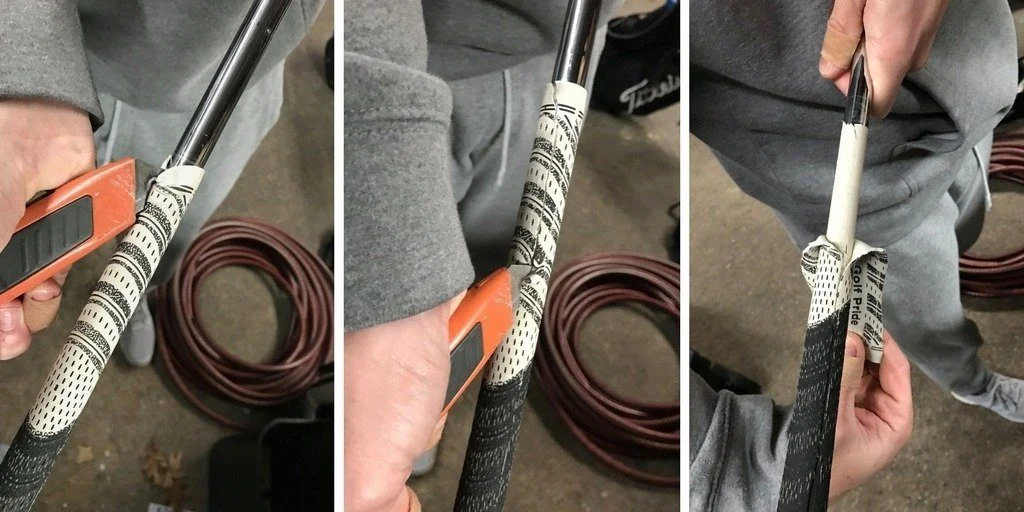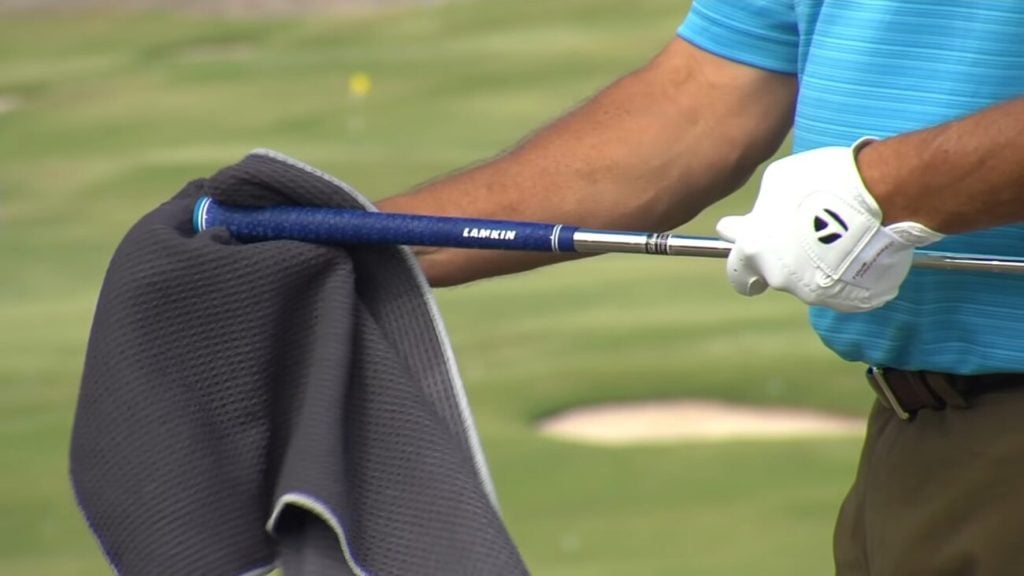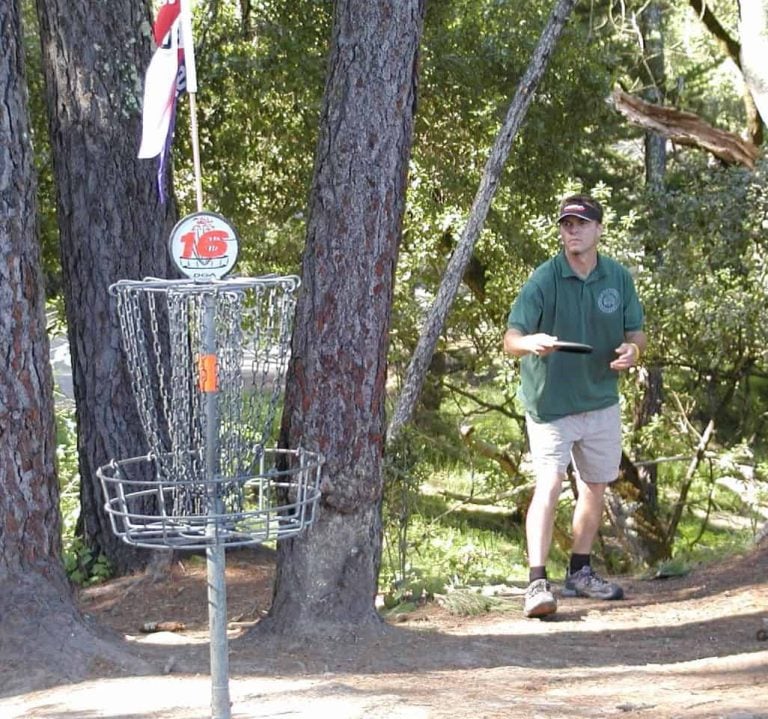Getting a Grip on Your Game: A Step-by-Step Guide to How to regrip golf clubs
Key Takeaways:
- The condition of golf club grips has a significant impact on performance, making regripping an important aspect of golf club maintenance.
- Choosing the right grip based on size, texture, and firmness is essential for optimizing control and comfort while playing.
- Considering prevailing weather conditions when selecting a grip can further enhance performance and prevent slips.
- When deciding between DIY regripping and professional assistance, it is important to compare costs and consider factors such as skill level and available tools.
- A step-by-step guide for DIY regripping includes safely removing the old grip, cleaning the shaft, applying grip tape, and properly securing the new golf grips.
- Regularly cleaning and maintaining golf club grips is crucial for optimal performance, and various methods can be used to clean and extend their lifespan.
- Additional tips and considerations include selecting grips based on personal preferences and playing conditions, understanding different grip types, and ensuring proper fitting of the entire grip size to the graphite shafts outer diameter.
- Regripping can significantly improve game improvement and following proper installation steps is important for maximizing the benefits.
- Ultimately, the decision between DIY regripping and professional assistance depends on individual preferences, skill level, and available resources.
Introduction
Regripping your golf clubs is essential for a comfortable and firm grip. Replacing the worn-out grip with a new one is easy with these steps.

Carefully use a utility knife to cut off the old grip, avoiding damage to the shaft.
Clean the shaft to remove any residue from the old grips. This will ensure a secure bond between the new grip and the club.
Wrap grip tape around the entire shaft, starting from the top. Overlap the edges to create a smooth surface.
Apply grip solvent to the tape. This will make it easier to slide the new grip on.
Align the new grip with the clubface. Slowly slide it on, avoiding air bubbles.
Let the grip dry for 24 hours before using it. This will ensure a secure bond.
Choose the type of grip that suits your playing style and preferences. Different materials and designs provide various levels of traction and comfort. Experiment to find the best one for you.
Follow these steps and pick the right grip for you. You’ll have improved control and performance when playing golf!
Importance of Regripping
Worn or slippery grips on your golf clubs can significantly affect your performance on the course. In this section, we’ll explore the importance of regripping and how it can enhance your game. From understanding the impact of worn or slippery grips on your shots to choosing the right grip based on size, texture, and firmness, we’ll provide valuable insights to help you make the most informed decisions. We’ll also discuss the importance of considering prevailing weather conditions when selecting the most suitable grips for optimal performance.
The impact of worn or slippery grips on performance
Worn or slippery golf grips can have a big effect on a player’s game. Worn grips lose traction and control during swings, which affects accuracy and distance. Slippery grips make it hard to keep a secure grip on the club, leading to mishits and bad ball striking. So, replacing worn or slippery grips is important for good performance.

When buying new grips, size, texture, and firmness are key. Grips come in different sizes for different hand sizes, and different textures. Some players like a tackier grip for more feel and control. Soft grips absorb more shock but can reduce feedback. The right grip choice depends on personal preference and weather conditions.
Weather can change grip performance too. Too much moisture or sweating makes grips slippery. Dry conditions make hands overly dry and reduce grip friction. Golfers should choose grips with features for different weather conditions. Moisture-wicking materials and compounds help maintain grip stability.
Choosing the right grip based on size, texture, and firmness
Choosing the right grip is key for your golf clubs. Size, texture, and firmness are all important factors.

Here’s a breakdown of what to look for:
- Size – Range from standard to oversize. And cater to those with smaller hands (undersize). Get a comfortable hold throughout your round.
- Texture – Corded or ribbed grips provide grip and stop slipping in humid conditions. Smooth or tacky grips have a softer feel.
- Firmness – Firm grips provide stability and control. But may not absorb shock like softer grips. It’s personal preference and playing style.
Choose a grip that fits your needs and preferences. It could improve your game performance. Don’t let the rain affect your swing – have a good grip!
Considering prevailing weather conditions
Golfers should pick grips that suit weather conditions. In wet weather, use textured grips for extra traction and a firm hold when hands are damp. But in hot weather, softer, tackier grips are better as they are comfier and won’t slip due to sweat.
The firmness of the grip should also be considered. Firmer grips are good for dry weather, while softer grips for wet or humid.
Check your grips’ condition often. Too much sunlight and moisture can ruin them. So, choose grips based on size, texture, firmness, and weather to make sure you have a reliable grip even in challenging weather. Get the most out of your game!
DIY Regripping vs. Professional Assistance
When it comes to regripping your golf clubs, should you go the DIY route or seek professional assistance? In this section, we’ll delve into the cost comparison and factors to consider, necessary supplies and tools for a DIY project, and the option of entrusting your clubs to a professional. So, whether you’re aiming to save some bucks or ensure a flawless grip, read on to make an informed decision.
Cost comparison and factors to consider
Cost and factors to think of are key when picking whether to DIY regrip your golf clubs or get help from a professional. The cost of regripping can change based on numerous factors that need to be taken into account beforehand.
One factor to consider is the price of supplies and tools needed for a DIY job compared to the cost of taking the clubs to a pro. To better understand these costs, take a look at the table below:
| Factors to Consider | DIY Regripping | Professional Assistance |
|---|---|---|
| Cost of Supplies | $$ | $$$ |
| Time Required | Moderate | Quick |
| Skill Level Needed | Intermediate | None |
| Quality of Results | Depend on Skill | Consistently Good |
As seen in the table, DIY regripping usually requires buying supplies and tools which can differ in price but generally fall in the moderate range. On the other hand, going for professional aid might result in higher costs as they usually charge for their knowledge and labor. Additionally, DIY regripping may need some level of skill or experience, while professional assistance eliminates this requirement.
Apart from cost considerations, the choice between DIY regripping and professional aid comes down to personal choices and situations. Some individuals like doing tasks on their own, enjoying the process of doing projects themselves. Others may prefer to rely on pros who have a lot of knowledge and experience in golf club regripping.
To sum up, evaluating the cost comparison alongside individual preferences and situations is essential when deciding whether to do DIY regripping or seek professional assistance for golf club regripping. Considering these factors carefully guarantees a decision that matches one’s needs and budget. So, get ready to show off your inner handyman and get the supplies and tools required for this DIY regripping journey!
Necessary supplies and tools for a DIY project
When tackling a DIY regripping project, it’s essential to have the necessary supplies and tools. Grip tape is a must-have for secure bonding between the grip and shaft. Solvent softens the old grip for easier removal. And a sharp knife allows for precise cutting when taking away the old grip.
For extra success, it’s helpful to have more tools on hand. A rubber vise clamp secures the club while gripping, a shaft protector prevents damage, and a blow dryer or air compressor dries solvents.
To confidently regrip your golf clubs yourself, make sure you have all the needed supplies and tools. Grip tape, solvent, and a knife are the basics. Having additional tools such as a vise or clamp, shaft protector, and blow dryer will ensure an accurate result.
The option of taking clubs to a professional
Considering taking your golf clubs to a professional for regripping is an option. They have the expertise and experience for a correct process, thus providing optimal performance. They can suggest the right grip based on size, texture and firmness. Also, weather conditions can be taken into account when recommending grips. Different grips may offer better traction in wet or dry conditions, aiding in maintaining a consistent grip.
Professionals have access to various brands of grips, giving you more options. Plus, they have specialized tools and equipment for precise grip installation. While it may cost more than DIY regripping, the job will be done well with less risk of damaging the clubs. So, get a hold on your game and don’t let a slippery grip ruin your swing!
Step-by-Step Guide for DIY Regripping
Looking to regrip your golf clubs? This step-by-step guide has got you covered. From safely removing the old grip to ensuring the proper adhesion of the new one, we’ll walk you through each stage of the process. With tips on cleaning the shaft, applying grip tape, and sliding on the new grip, you’ll be swinging with confidence in no time. Follow along for a seamless regripping experience.
Removing the old grip safely and completely
- Cut the grip with a grip removal tool or utility knife. Start near the lower hand position and slowly work to the end.
- Gently peel it back to reveal the tape underneath, being careful not to damage the shaft.
- Peel off any remaining tape residue, or use adhesive remover. Make sure all old tape is gone before regripping.
- Different kinds of grips will require different techniques. Rubber grips can be peeled after cutting, but corded grips need extra care.
- It’s important to safely and completely remove the old grip for a proper foundation for the new one.
- Golfers must consider grip type and personal preferences when removing them.
Cleaning the shaft and preparing for the new grip
Maintaining optimal performance on the golf course is essential – neglecting it could compromise your game. To clean the shaft and fit a new grip, follow these steps:
- Carefully remove the old grip.
- Clean the shaft with solvent or alcohol.
- Dry the shaft with a cloth.
- Apply the grip tape.
- Align the grip with one end of the shaft and slide it on.
- Let the grip dry for 24 hrs.
Different golfers have different preferences for their grips. Make sure that your grip size is suitable for your club’s shaft. Additionally, use warm soapy water and a soft brush to clean the grips regularly, avoiding harsh chemicals.
Applying grip tape and ensuring proper adhesion
- Prepare the shaft: Clean it completely to get rid of dirt, debris, and adhesive residue from the old grip. Use a mild solvent or rubbing alcohol. Once cleaned, put on grip solvent to make the shaft slippery for easy grip installation. Remove excess solvent afterward.
- Apply grip tape: Wrap double-sided tape around the entire length of the shaft. Start at the butt end and overlap each layer slightly until you reach the top. Smooth out any wrinkles or bubbles. Make sure the tape covers the shaft without going over.
- Securely attach the grip: Put some grip solvent in the new grip and spread it out. Put the wet portion of the grip onto the taped shaft and align with any alignment marks present. Push it on firmly, avoiding air bubbles.
These steps will make sure your grip is attached securely to the club’s shaft. It also helps with peak performance on the course. Correct installation aids shot control and reduces slipping during swings, resulting in accurate shots.
Sliding the new grip on and allowing it to dry
- Slide the new grip on!
- Ensure the old grip is completely removed and the shaft is cleaned.
- Apply the grip tape firmly, so it sticks.
- Press down and smooth out any air bubbles or wrinkles.
- Slide the grip onto the shaft, making sure it is aligned correctly.
- Allow it to dry before using the golf club. This will make sure the grip is secure.
- Follow these steps for effective grip cleaning and maintenance, including sliding the new grip on and letting it dry.
Maintaining and Cleaning Your Grips
To ensure optimal performance on the golf course, it is essential to properly maintain and clean your golf club grips. In this section, we will explore why regular cleaning is crucial for enhancing performance, as well as various methods for cleaning and maintaining grips. Additionally, we’ll provide valuable tips on maximizing the lifespan of your grips, helping you make the most of your investment and maintain a consistent grip for better swings.

Importance of regular cleaning for performance
Golf club grips must be regularly cleaned to keep performance optimal. Worn or dirty grips reduce a player’s ability to control the club. Cleaning the grips ensures maximum traction, comfort, and accuracy during the swing.
Selecting the best grip based on size, texture, and firmness is essential. However, even the best grip will be affected if not maintained. Cleaning removes dirt, sweat, oils, and debris. This keeps the grip’s texture and tackiness. It also extends the lifespan of the grip, protecting it from sweat, oils, and damage.
Pro Tip: Use mild soap or grip cleaner specifically designed for this purpose. Avoid harsh chemicals or abrasive cleaners.
Methods for cleaning and maintaining grips
Cleaning and maintaining golf club grips is essential for optimal performance. Unclean or worn grips can affect your swing and game. Fortunately, there are several effective ways to keep your grips clean and in good shape.
- Clean your grips with warm water and mild detergent. This will remove sweat, dirt, and oils.
- Use a soft-bristled brush or cloth to delicately scrub the grip surface. Avoid abrasive materials that could damage the grip.
- Rinse the grips with clean water to remove any soap residue.
- Dry the grips fully before putting them away or using them again. Avoid moisture buildup as it can lead to mold or mildew.
Other methods for maintaining golf club grips include:
- Inspect your grips for any signs of wear or damage. If you see cracks, tears, or lack of tackiness, it may be time to get new ones.
- Try grip enhancers like grip spray or powder to restore tackiness on older grips.
- Store your clubs in a climate-controlled environment to prevent extreme temperature changes that can harm the grip material.
You can also rotate your grips periodically to extend their lifespan. Switching clubs around will equally spread wear across all the grips. This helps maintain consistency throughout your game.
Different types of golf club grips have specific care requirements. Rubber or synthetic grips are easier to clean and maintain compared to leather grips. Rubber grips can be washed more frequently, whereas leather grips need gentle cleaning with a damp cloth and conditioning to prevent drying out. Knowing the characteristics of your grip material ensures proper cleaning and maintenance.
The methods for cleaning and maintaining golf club grips have evolved over time. In the past, golfers may have used simpler techniques or other materials to clean their grips. Now, with technology and an emphasis on equipment performance, these methods are more standardized and specific. This allows golfers to optimize their game with clubs in top condition.
By following these steps, you can ensure your golf club grips are clean and well-maintained, enhancing your game performance. Remember to regularly clean, inspect, use grip enhancers, store in the right environment, rotate, and understand any specific care needs. Incorporating these into your routine will give you control and comfort throughout your game.
Tips for maximizing the lifespan of your grips
Maximizing your grip lifespan is possible with the right care and cleaning. Here are some tips to help you protect your investment and ensure your golf clubs perform at their best:
- Regularly clean your grips to remove dirt, sweat, and oils.
- Avoid exposing your golf clubs to extreme temperatures or weather.
- Store your clubs in a cool and dry place when not in use.
- Inspect your grips for signs of wear or damage.
- Replace them if you notice any cracks, tears, or significant wear.
Golfers have always understood the importance of grip maintenance for optimal performance. Manufacturers have developed methods to improve grip longevity. Get a grip on your game with these tips and considerations for regripping golf clubs.
Conclusion
When it comes to regripping golf clubs, the conclusion is clear: it can have a significant impact on game improvement. Whether you decide to tackle the task yourself or seek professional assistance, following proper installation steps is crucial. Stay tuned to discover the importance of regripping for your game and how to make the best decision for optimal results.
The impact of regripping on game improvement
Regripping golf clubs can drastically improve gameplay. Worn or slippery grips can negatively influence performance, causing a lack of control and accuracy. Selecting the right grip based on size, texture, and firmness is key to improving overall play. Weather conditions should also be taken into account when choosing a grip.
Regripping regularly is essential for optimal performance. Unsuitable grips can lead to increased tension in the hands and inaccuracy. Replacing worn-out grips with those that fit the player’s preferences and playing conditions can boost confidence and consistency.
DIY regripping requires specific tools and supplies, such as grip tape and solvent. When replacing an old grip, it must be removed safely and the shaft thoroughly cleaned before the new one is applied. Sliding the new grip onto the shaft correctly and allowing it to dry will ensure a secure fit. Following these steps accurately will help maintain performance throughout a round.
Professionals offer regripping services for those who are not confident doing it themselves. While DIY regripping is cost-effective, some may opt for professional help to make sure the installation is done correctly. Professionals have access to high-quality materials and can provide advice on the best grip for each player’s requirements.
In conclusion, regripping golf clubs is crucial for game improvement. By following proper installation steps and selecting the right grips based on personal preferences and playing conditions, players can benefit from improved performance on the course. Skipping installation steps is like teeing off blindfolded – you’re just asking for a hole-in-one… right in your wallet!
Importance of following proper installation steps
Regripping golf clubs is essential. It ensures the new grip’s secure attachment and no slippage during use. And, it helps maintain grip performance and prolong its lifespan.
- Step 1: Safely remove the old grip – Cut away the old grip with a utility knife. Be careful not to damage the shaft. Then, remove any adhesive or tape.
- Step 2: Clean the shaft – Clean the shaft with a solvent or cleaner. Remove all dirt, debris, and residue. This helps the shaft and grip stick.
- Step 3: Put on grip tape – Wrap double-sided grip tape around the shaft. Cover the entire area the grip will be. Press firmly. Then, activate the adhesive with a solvent or solution. Slide on the new grip.
It’s important to follow these steps. Skipping or doing them wrong can cause issues. Loose grips, decreased performance, or quicker wear-out.
By following the steps, you ensure optimal results. Proper adhesion gives stability and control during swings. Cleaning and preparing both surfaces maximizes grip durability and longevity. Doing each step carefully leads to improved gameplay.
Making the decision between DIY regripping and professional assistance
Making the decision between DIY regripping and professional assistance requires taking into account multiple factors.
Firstly, your level of expertise and experience with regripping golf clubs. If you are familiar with the process and confident in your abilities, then DIY regripping can be a viable option. However, if you lack experience or are uncertain of your skills, it may be best to seek professional help.
Time and convenience are also important. Regripping golf clubs can be a time-consuming task, especially if you have many clubs that need attention. If you have limited time or prefer not to deal with the hassle of regripping yourself, then seeking professional assistance can save you time and effort.
Considering these factors will enable you to make an informed decision on whether to tackle regripping as a DIY project or seek professional help based on your budget, skills, and personal preferences.
Some Facts About How To Regrip Golf Clubs:
- ✅ The condition of golf grips is important for performance, just like the condition of tires for a vehicle. (Source: Team Research)
- ✅ Golfers often tolerate worn and torn grips, which can make them slippery and impact performance. (Source: Team Research)
- ✅ Cleaning golf grips can restore tackiness, but eventually, they will need to be replaced. (Source: Team Research)
- ✅ Excessive grip pressure can shorten a glove’s lifespan and wear out the grip. (Source: Team Research)
- ✅ Choosing the right golf grip involves considering size, texture, firmness, and prevailing weather conditions. (Source: Team Research)
FAQs about How To Regrip Golf Clubs
FAQ 1: How often should golf club grips be replaced?
Answer: Golf club grips should be replaced regularly to maintain their performance and ensure a comfortable grip. Most golfers wait until their grips are worn down before replacing them, but it is recommended to regrip your clubs once a year or every 40 rounds, whichever comes first.
FAQ 2: What are the consequences of using worn grips?
Answer: Using worn or slippery golf club grips can negatively impact your performance. It can lead to decreased shot accuracy, loss of club control, and increased grip pressure. This can result in inconsistent shots and reduced distance. Therefore, it is essential to replace worn grips to maintain optimal performance.
FAQ 3: What factors should be considered when choosing golf club grips?
Answer: When choosing golf club grips, several factors should be considered. These include size, texture, firmness, and prevailing weather conditions. The grip size should match your hand size to ensure a comfortable hold. The texture and firmness should provide the desired level of traction and feel. Additionally, considering the weather conditions you frequently play in can help you select grips that provide optimal performance in different climates.
FAQ 4: Can I regrip my golf clubs at home?
Answer: Yes, you can regrip your golf clubs at home with the right tools and materials. However, it is essential to have the necessary supplies, including grips, grip solvent, tape, a utility knife, a towel, and a vice grip. It is also crucial to follow the proper installation steps to ensure a secure and durable grip. If you are unsure or inexperienced, you can also take your clubs to a golf shop for professional assistance.
FAQ 5: How do I clean golf club grips?
Answer: To clean golf club grips, you can use grip cleaning wipes or warm water with a soft-bristled brush. Start by wiping the grips with the cleaning wipes or gently scrubbing them with the brush and soapy water. After cleaning, rinse the grips with clean water and dry them with a towel. Regularly cleaning your grips can help maintain their performance and appearance.
FAQ 6: What are the common mistakes to avoid when regripping golf clubs?
Answer: Some common mistakes to avoid when regripping golf clubs include not removing the old grip completely, not properly measuring and applying the new tape, not using enough grip solvent, and not allowing the grip to dry for the recommended time. It is important to carefully follow the step-by-step instructions and take your time to ensure a successful regripping process.






![From Coast to Fairway: How Many Golf Courses Are in California [2024]](https://www.fairwayfindings.com/wp-content/uploads/2023/07/how-many-golf-courses-are-in-california-1-768x768.jpeg)
